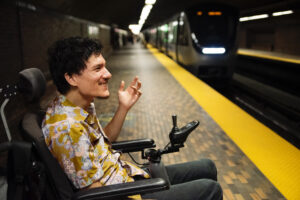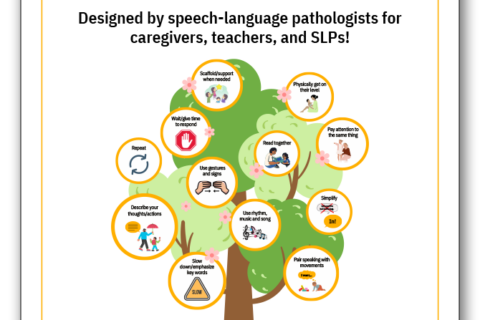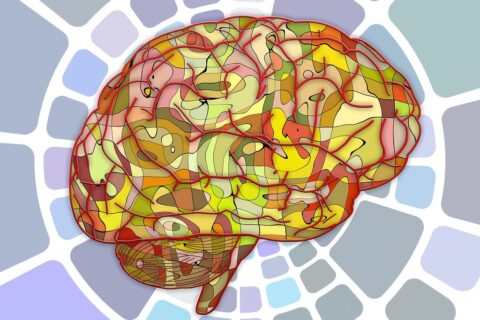Insights Into Spastic Dysarthria Treatment Approaches

Understanding Spastic Dysarthria
Speaking requires the coordination of multiple muscle systems working together in perfect balance—from those controlling our breath, to those activating the movements of our larynx and vocal folds, as well as those managing the organs of articulation which shape sounds into words. For individuals living with spastic dysarthria, neurological differences impact the precise orchestration of this this system making speaking more effortful and communication more challenging. In this blog, we explore what spastic dysarthria is, its symptoms, causes, and how speech therapy can help.
What Is Spastic Dysarthria?
Spastic dysarthria is a motor speech disorder that disrupts the muscle movements involved in speaking. It’s caused by damage to the brain’s upper motor neurons. Upper motor neurons connect the motor cortex in the brain to our muscles and are responsible for activating the voluntary movement and coordination of muscles required for speaking. These neurons additionally help regulate muscle tone. When they’re affected, speech muscles become overly tense (a condition known as spasticity) which reduces the range of motion and force of movement of the muscles needed for adequate breath support, voice quality, articulation, resonance, and the ability to vary pitch to convey desired expression and meaning.
Common symptoms include:
- Slow Speech Rate
- Imprecise Articulation
- Distorted Vowels and Consonants
- Low Pitch
- Strained-Strangled Vocal Quality
- Reduced Vocal Intonation
- Difficulty Regulating Vocal Loudness
- Reduced Breath Control
- Speaking in Short Phrases
- Hypernasality
These neurological changes can significantly reduce speech intelligibility, making it difficult to speak with ease. The need to speak in short phrases often causes breakdowns in clarity and can restrict the ability to express the full breadth and complexity of one’s message, as ideas may be simplified for ease of speaking. This can ultimately undermine overall communication confidence.
What Causes Spastic Dysarthria?
Spastic dysarthria results from bilateral disruption to the brain’s upper motor pathways. This may arise secondary to:
- Vascular Disorders: Strokes affecting the brainstem or both hemispheres of the brain are one of the most common causes.
- Traumatic Brain Injury (TBI): Severe head injuries can disrupt upper motor pathways.
- Neurological Conditions: Parkinson’s Disease (PD), Multiple Sclerosis (MS), Cerebral Palsy, Progressive Supranuclear Palsy (PSP), or Amyotrophic Lateral Sclerosis (ALS)
- Other Brain Injuries: Tumors, infections, or lack of oxygen to the brain (e.g., during cardiac arrest)
- Inflammatory Diseases: Conditions such as leukoencephalitis that affect the demyelination of white matter in the brain.
How Does Spastic Dysarthria Affect Daily Life?
Spastic dysarthria doesn’t affect intelligence or the desire to connect. It does, however, often mean navigating challenges in everyday communication. Conversations might require more time, and expressing emotions or ideas may require more effort which can cause many to feel exhausted. Additionally, the effortful nature of speech can similarly contribute to fatigue and frustration, especially in social or professional settings.
For loved ones, it may be harder to consistently understand a loved one’s message. For these reasons, awareness and patience are essential—with the right treatment intervention, compensatory techniques, and social support, communication can be optimized to ensure those facing challenges continue to stay connected to those aspects of life that matter most.
How Can Speech Therapy Help?
The primary goals in treating spastic dysarthria are to improve the clarity, naturalness, and effectiveness of speech. Speech therapy offers solutions for strengthening the subsystems of the motor speech system that are affected by neural changes associated with spastic dysarthria. Because the condition’s severity and impact vary, it’s important to tailor therapy to each individual. While therapy goals vary based on individual needs, a comprehensive treatment plan will focus on the following areas:
- Breath Support: Exercises and training to improve the strength and coordination of the respiratory-phonatory (voicing) systems to ensure adequate breath support for speaking , optimal projection of voice, and improve vibratory motion of vocal folds while reducing muscle strain.
- Relaxation Exercises: Mindfulness and relaxation methods including back pressure exercises help to increase mind-body connection and reduce muscle tension throughout the larynx
- Voice Therapy: Exercises including Resonant Voice Therapy and Vocal Function Exercises improves vocal quality and reduces vocal strain by training an effortlessly strong clear voice and lessening the impact between the vocal folds
- Improving Articulation: Articulation exercises focus on increasing the amplitude of movement and articulatory space within the oral cavity for improved coordination and precision of movement and crisper, clearer words to enhance intelligibility.
- Rate Control: Tools such as pacing boards or rhythmic tapping encourage slower, more deliberate speech.
- Speech Practice: Engaging in functional speaking tasks, including conversational practice and the rehearsal of commonly used phrases that integrate targeted speech strategies such as optimal breath and voicing techniques as well as strategic breath phrases, for instance, ensure skills developed in therapy are applied to every day, real-world communication contexts.
LSVT LOUD® (Lee Silverman Voice Treatment LOUD) is an intensive speech therapy program shown to benefit individuals with spastic dysarthria. This condition, caused by upper motor neuron damage, leads to hypertonia (muscle stiffness), reduced range of motion, strained-strangled vocal quality, and difficulties with vocal loudness and speech clarity. LSVT LOUD addresses these challenges by targeting key areas of motor speech control, including:
Respiratory coordination: Stronger and more consistent breath support.
Phonation: Reduced vocal strain and increased efficiency of vocal fold vibration.
Articulation: Improved clarity and precision of speech sounds.
Prosody: Enhanced pitch and intonation patterns.
Intelligibility: Overall improvement in clarity and communicative effectiveness.
Over a decade of research has investigated the impact of LSVT LOUD treatment with children and adults with spastic dysarthria associated with cerebral palsy. Those who participated in the 4 week intensive treatment experienced the following outcomes:
1. Improved Vocal Loudness
- Individuals with spastic dysarthria often exhibit reduced vocal intensity. LSVT LOUD focuses on increasing vocal loudness through sustained phonation and high-effort vocal tasks. This emphasis helps to counteract reduced vocal strength and projection, improving overall intelligibility.
2. Enhanced Respiratory Support
- Spastic dysarthria can impair breath control, leading to short utterances and difficulty sustaining speech. LSVT LOUD incorporates exercises that strengthen respiratory coordination and support, enabling individuals to produce longer phrases with consistent loudness.
3. Optimized Voice Quality
- The strained-strangled voice quality in spastic dysarthria results from excessive muscle tension. LSVT LOUD promotes more efficient use of the vocal folds by encouraging open, relaxed phonation through loud, deliberate practice. This can stabilize voice quality and reduce vocal strain.
4. Increased Articulatory Precision
- While the primary focus of LSVT LOUD is vocal loudness, its effects often extend to articulation. Speaking louder requires greater effort and precision, which increases the amplitude of movement of articulators and reduces slurred or imprecise speech sounds common in spastic dysarthria.
5. Improved Prosody and Speech Naturalness
- LSVT LOUD encourages patients to think about their voice dynamically and engage in tasks that involve modulation of pitch, tone, and loudness. This can help restore more natural-sounding speech patterns and improve prosody, which is often monotonous in spastic dysarthria.
6. Neuroplasticity and Motor Learning
- The high-intensity, repetitive nature of LSVT LOUD fosters neuroplastic changes in the motor speech system. This retraining of neural pathways helps individuals stabilize and sustain improved speech performance over time.
7. Carryover into Everyday Communication
- LSVT LOUD emphasizes functional carryover, training individuals to apply these improvements in real-world speaking contexts. This helps stabilize gains and increases confidence in daily communication.
Moreover, research investigating the impact of LSVT LOUD program to address spastic dysarthria related to stroke, TBI, tumor, and encephalitis found that those who participated in the 4 week intensive program experienced improved vocal quality and control over their voice.
Building Bridges Through Communication
At its heart, speech therapy is about connection. For individuals with spastic dysarthria, it’s not just about improving speech—it’s about rebuilding confidence, enhancing relationships, and finding ways to be heard.
At Open Lines®, we specialize in providing comprehensive speech therapy services for individuals with dysarthria, offering personalized treatment plans tailored to each individual’s unique needs and goals. Every Open Lines clinician is specially trained and certified LSVT LOUD® and LSVT LOUD® For Kids with in-house supervision by LSVT LOUD global expert, Dr. Jessica Galgano. Through evidence-based interventions and a holistic approach to care, we strive to empower individuals with dysarthria to maximize their communication potential and live life to the fullest. If you or a loved one are experiencing challenges related to dysarthria, don’t hesitate to reach out to our team of expert clinicians for guidance and support.
Get in Touch With Open Lines®














